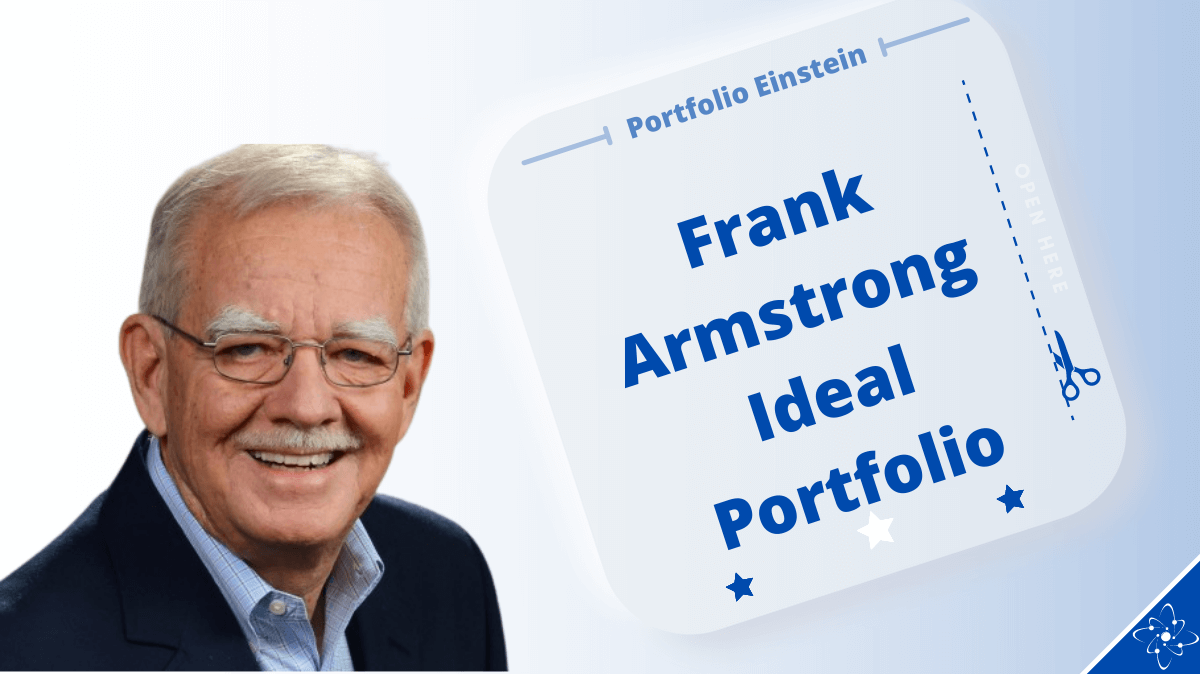Here Are The 20 Best Income Portfolios Built with ETFs for 2023
If you're looking for income then you should look at this list of the 20 best income portfolios.
Frank Armstrong’s Ideal Portfolio is exposed to 70% stocks and 30% bonds. It can be built with 7 ETFs.
Here is the historical return for Frank Armstrong’s Ideal portfolio.
Portfolio data was last updated on 11th of August 2023, 08:35 ET
| Name | Year to date | Return in 2022 | 10 year return | CAGR since 1989 (%) | Draw Down | Expense ratio | Yield |
|---|---|---|---|---|---|---|---|
| Frank Armstrong Ideal Index Portfolio | 5.31 | -11.8 | 5.73 | 7.04 | -25.75 | 0.08% | 2.18 |
Here is what the table is showing you
Year to date: This shows what the portfolio has returned this year starting from the first trading day of the year.
10 Year return: This shows the compounded annualized growth rate over a ten-year period. The current year is excluded from calculations.
CAGR since 1989: This shows the compounded annualized growth rate since 1989. The current year is excluded from calculations.
Expense ratio: This shows the cost of holding the portfolio if you were to construct the portfolio using the proposed ETFs.
Yield: This is the expected dividend yield of the portfolio.
Please note that past performance is not a guarantee of future returns.
Below you can see the returns of the best portfolios that we have benchmarked.
| Name | See Portfolio | Year to date | Return in 2022 | 10 year return | CAGR since 1989 (%) | Draw Down |
|---|---|---|---|---|---|---|
| Ben Stein Retirement | Coming soon! | 4.05 | -18.03 | 9.46 | 10.8 | -35.42 |
| Paul Merriman 4-Fund-Portfolio | Coming soon! | 9.22 | -11.98 | 11.25 | 10.38 | -35.26 |
| S&P 500 | Coming soon! | 17.09 | -18.19 | 12.52 | 10.28 | -37.63 |
| Paul Merriman Target Date Portfolio (25 year old) | Coming soon! | 6.63 | -13.08 | 8.28 | 10.2 | -36.46 |
| Scott Adams Dilbert Portfolio | Coming soon! | 10.87 | -18.75 | 7.0 | 10.19 | -44.88 |
| JL Collins, Simple Path To Wealth, Wealth Building Portfolio | Coming soon! | 16.6 | -19.51 | 12.08 | 10.19 | -37.0 |
| American Institute of Individual Investors (AAII) Portfolio | Coming soon! | 3.74 | -13.91 | 9.7 | 10.16 | -40.85 |
| Paul Merriman Target Date Portfolio (35 year old) | Coming soon! | 6.57 | -13.22 | 8.31 | 10.08 | -36.35 |
| Assetbuilder.com Portfolio 14 | Coming soon! | 6.95 | -16.94 | 7.59 | 9.99 | -37.91 |
| Balanced Portfolio 90/10 | Coming soon! | 14.83 | -18.87 | 11.03 | 9.84 | -32.78 |
Here is how you build Frank Armstrong’s Ideal portfolio with ETFs.
The letters in brackets denote the stock symbol for the recommended ETF. You can look up the symbols at your stockbroker. You can see a listing of all the ETFs we recommend on this page.
Frank Armstrong III is an investment advisor and the author of The Informed Investor: A Hype-Free Guide to Constructing a Sound Financial Portfolio.
He is the CEO and founder of the advisory firm Investor Solutions.
Investor Solutions takes the fiduciary role very seriously.
Frank Armstrong has written several books, but the most famous one is The Informed Investor.
You can currently get his newest book for free on his website.
He has often written for Forbes.
Frank Armstrongpresents the Ideal Index Portfolio in his book The Informed Investor: A Hype-Free Guide to Constructing a Sound Financial Portfolio. Frank Armstrong’s portfolio is tilted towards small-cap and value stocks.
It is relatively conservative. It holds 30% in short-term treasuries, which are considered an ultra-safe and a very low-volatile asset class.
The portfolio may be ideal for some people, but for others, it may be too conservative. If you are in your twenties, for example, you want to be at least 90% invested in stocks and preferably 100% in stocks.

Be sure to check out Frank Armstrong’s business website, Investor Solutions.
If you have already committed to a portfolio then maybe you need help maintaining the portfolio. In this case you will find our rebalance worksheet useful.
Rebalancing your portfolio lowers your risk and may provide higher returns in the long run. It is completely FREE.
You can find the rebalance worksheet in our article Here Is The Most Easy To Use Portfolio Rebalance Tool.
